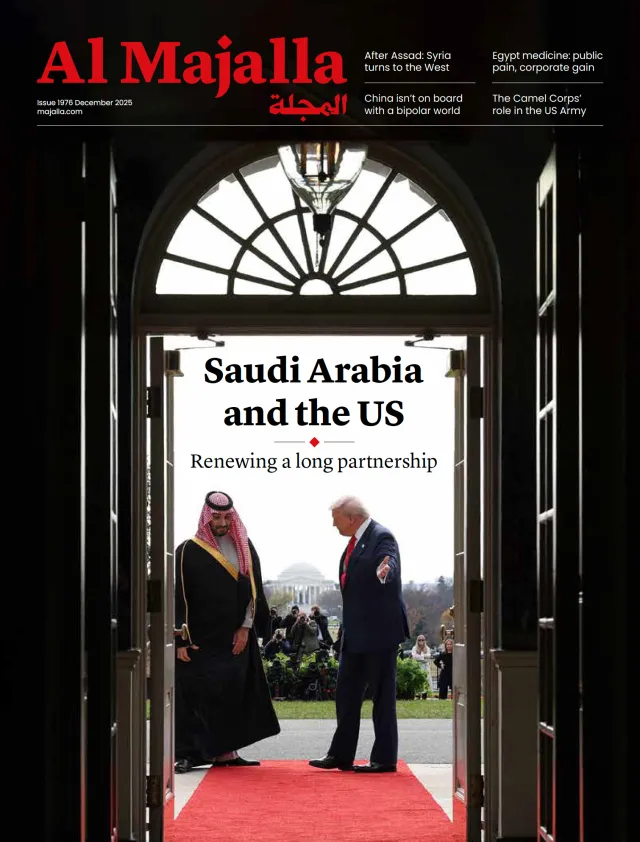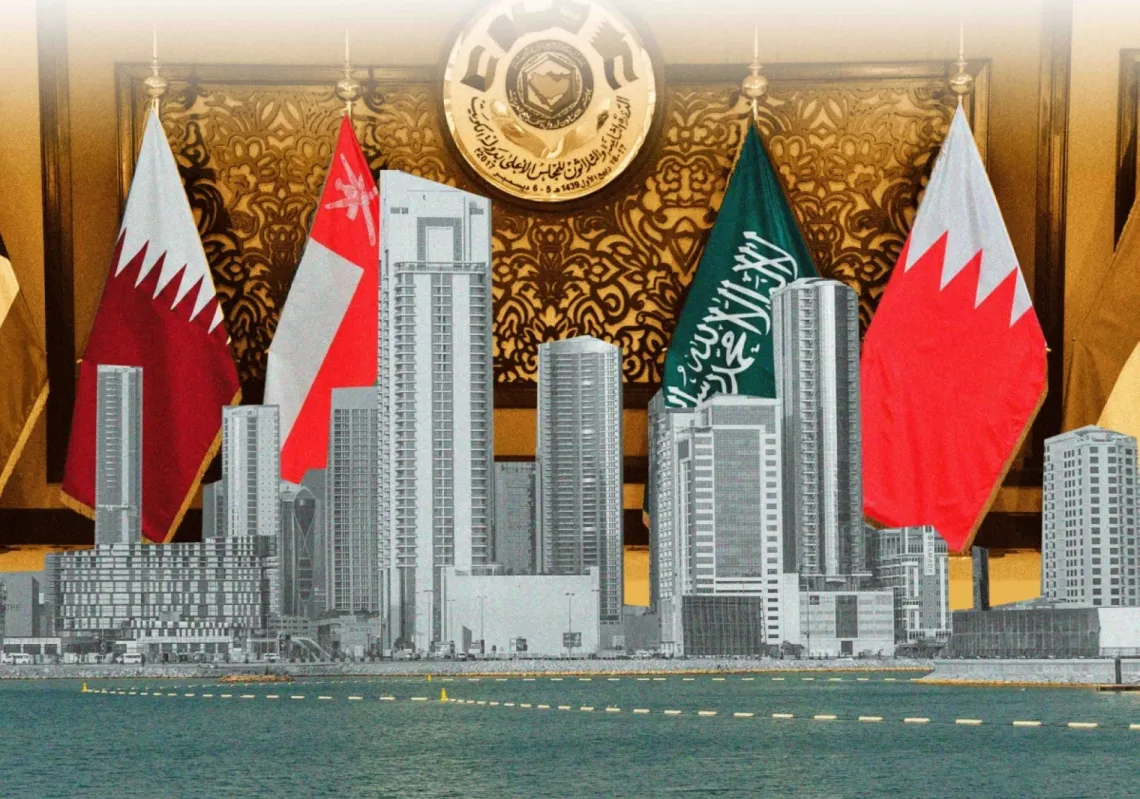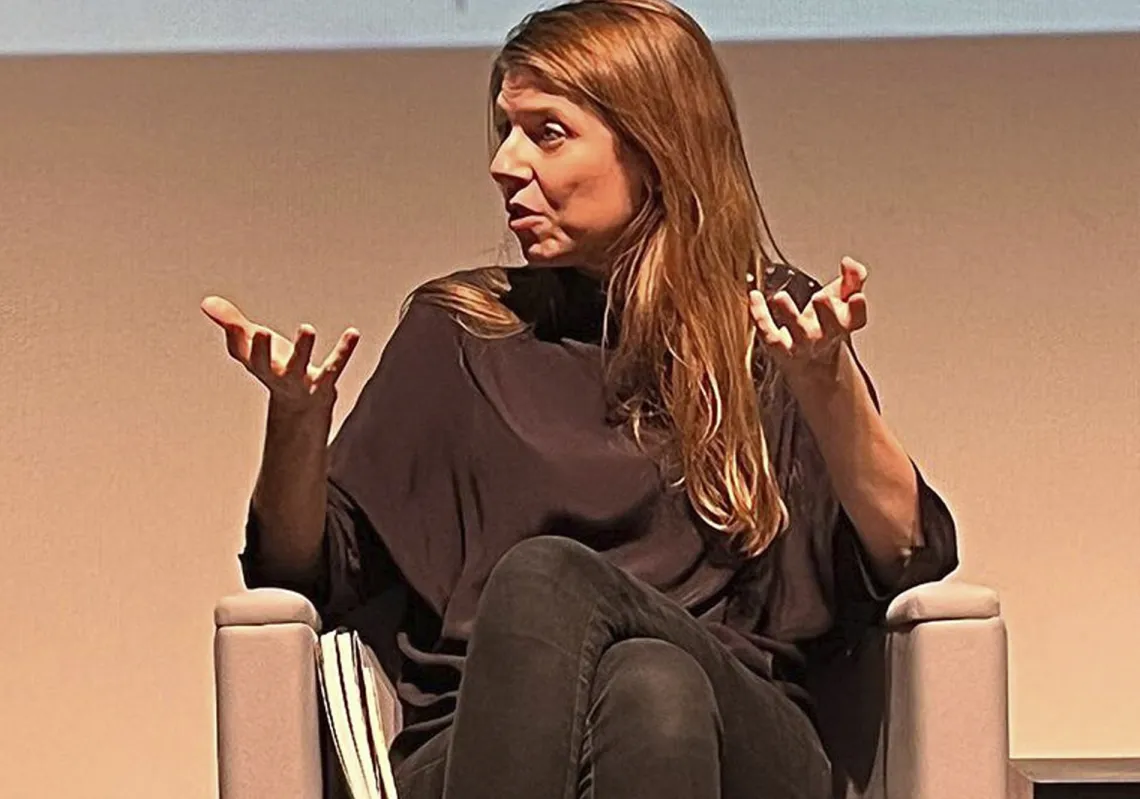The Arab world has a vibrant and rich literary scene. Al Majalla picks out some choice titles in our fortnightly round-up of the latest Arabic books, which aims to highlight some trends and thinking in the Arab world.

Against White Feminism: Notes on the Fault Lines
Author: Rafia Zakaria
Translator: Dahoq Ruqayya
Publisher: Takween Publishing, Kuwait/Iraq
The global feminist movement, though powerful and active, is far from unified. Within it lie various currents and schools of thought, at times conflicting. White feminism is the dominant form and urges women everywhere to conform to the white woman’s worldview, be that intellectually, politically, or socially.
This has led to fissures within the movement, as women of colour—including Black, Asian, Arab and other feminists—express concerns and perspectives that diverge significantly from those of white women. With that in mind, Rafia Zakaria’s Against White Feminism: Notes on the Fault Lines lives up to its title.
She highlights the divide within the feminist movement, one that has long simmered beneath the surface. This fracture separates those who write and speak about feminism from those who live it; those with a platform from those with lived experience; the theorists and policymakers from those who bear the scars and endure the struggle.
Although this schism is not always drawn along racial lines, the prevailing reality is stark: women who are paid to write about feminism, who head organisations and shape feminist policy in the West, are overwhelmingly white and wealthy. They appear to claim a definitive understanding of feminism and how it ought to function.
On the other side stand women of colour, working-class women, migrants, minorities, Indigenous women, trans women, and those living in shelters, many of whom embody feminist principles in their everyday lives but are rarely granted the space to articulate or document their experiences.
An unspoken assumption persists: the truly strong women, the ‘real’ feminists, are those moulded by other white feminists, women untouched by trauma or abuse. To translator Dahoq Ruqayya, the book is a powerful call to action for non-white feminists around the world to begin telling their own stories and dismantling the reductive image of womanhood that white feminism has constructed and imposed.
The consequences are painfully evident: women’s conditions are worsening, not improving. In her commentary, as reviewed by Shatha Al-Salmoni, Ruqayya argues that it is time to move beyond the empty cycles and the wasteful spending on empowerment workshops and conferences, which achieve little, regardless of their frequency.
As a final note, Ruqayya expresses hope that its translation into Arabic will enable Arab feminists to reassess their engagement with the feminist movement on their own terms. The Arab world is home to formidable feminist figures who deserve recognition, yet white feminism often fails to acknowledge them unless they conform to its predefined image—riding skateboards in hijab, holding protest signs, writing books about sex, or fleeing to the West. It is precisely this narrative that is being challenged.

A History of Insanity and the Asylum
Author: Juliana Cummings
Translator: Osama Abdelhaq Nassar
Reviewed by: Nassar Abdullah
Publisher: Tanmia Publishing and Distribution – Egypt
In ten analytically rich and densely informative chapters, Juliana Cummings’s book traces a harrowing and poignant journey through the shifting societal perceptions of madness and mental illness, from antiquity to today.
It examines major historical milestones in the development of mental asylums and the treatments, which were once based on the belief that mental illness was a form of divine punishment, demonic possession, or the result of evil spirits inhabiting the body. Such beliefs led to the use of gruesome tools, not least the trephine—a skull-drilling machine designed to release malevolent spirits.
As Cummings notes: “It was once customary to hear stories of families confining their insane relatives in animal pens, or even chaining them up.” While many state-run psychiatric hospitals in Britain have closed their doors and been demolished in recent decades, their legacy remains a powerful witness to the history of psychiatric care.
In his introduction, translator Osama Abdelhaq Nassar states that the book explores the historical development of human understanding of mental illness and its treatment—beginning with the ancient belief that mental disorders were caused by imbalances in the body’s four humours (blood, phlegm, yellow bile, and black bile), a theory that dominated ancient Greek thought.
The medieval view of madness (divine punishment or demonic possession) strongly shaped collective thinking during the Middle Ages, culminating in the emergence of modern conceptions of mental illness in contemporary times. According to Nassar, the evolving understanding of mental illness influenced the evolution of its treatments.
For instance, when mental illness was thought to be an imbalance in the body’s humours or fluids, bloodletting was seen as a logical prescription, with a focus on restoring equilibrium. Likewise, when it was thought to be a manifestation of divine wrath, prayer and supplication were considered appropriate responses. When it was thought to be due to demonic possession, physical beatings aimed at expelling evil spirits can be better understood. Regrettably, such practices are still found in certain Arab societies to this day.
Dr Nassar Abdullah offers a detailed exploration of the history of insanity and its treatments, beginning with bloodletting and extending to the use of purgatives, emetics, convulsant drugs, insulin shocks, and electroconvulsive therapy, before arriving at the new generation of psychiatric medications that revolutionised patient care.
Yet its true importance and significance lie in its ability to shed light on the evolution of human consciousness and our approach to one of the most vital aspects of life: mental health and psychological well-being. By tracing this history, we gain a better understanding of how humanity and civilisation have developed, as reflected in changing attitudes towards individuals with mental illness.
From chaining and violent beatings, to imprisonment in cell-like rooms, to the performance of cruel surgeries, including female genital mutilation and lobotomies, the narrative eventually reaches our current era. Richly illustrated with archival images and documents, the book presents a vivid—and at times unsettling—portrayal of how mental illness has been perceived and treated throughout history. It opens a compelling window onto one of the darkest and most violent chapters in the annals of human healthcare.

Private Diaries in Modern Arabic Literature
Author: Dr Najwa Amami
Preface by: Dr Mohamed Al-Qadi
Publisher: Al-Khareef Publishing – Tunisia
For a long time, writing personal diaries was a discreet and reserved practice in both the Arab world and beyond, but in recent years the diary as a literary form has been front and centre. Numerous diaries have now been published, celebrated at festivals, and even honoured with prestigious literary awards.
Tunisian scholar Dr Najwa Amami explores this evolving genre, from private and introspective activity. Diary-writing often serves as a form of self-communication and emotional catharsis, an attempt to document and preserve fleeting personal moments, and to manage and immortalise the passage of time.
Amami traces its origins to 19th-century Europe, its early phase characterised by authors who wrote solely for themselves, with no intent to publish. During a second phase, roughly 186-1910, authors still refrained from publishing during their lifetimes, but were aware that their writings may be released posthumously. From 1910 onwards, the diary became a recognised literary genre in both Western and Arabic contexts, with many writers now publishing their journals during their lifetimes.
The book charts the birth of diary-writing in Europe, private diaries in Arab literary criticism, and the genesis and characteristics of diaries in the Arabic corpus. Amami pulls from the works of French literary theorists whose thoughts on diary writing have been influential, including Philippe Lejeune, Catherine Bogart, Béatrice Didier, Michel Leleu, Alain Girard, Pierre Bache, and Françoise Simonet-Tonnant.
Lejeune’s seminal definition of diaries was a “series of dated traces”. This views the diary as a means of recording the imprints left by lived experiences on specific days. The idea forms a cornerstone of Amami’s argument throughout the book, which Dr Mohamed Al-Qadi prefaces.
By blending theoretical exploration with close textual analysis, Amami offers a nuanced examination of both the formal and thematic dimensions of the private diary. Her study draws on French critical traditions while also illuminating a wide array of examples from modern Arabic literature, positioning the diary as a significant and dynamic literary form in contemporary Arab letters.

Against Liberalism – Society Is Not a Market
Author: Alain de Benoist
Translator: Ali Asaad
Publisher: Liberal House – Sweden
Alain de Benoist is a prominent critic of liberalism on the global intellectual stage, and in this book, he delivers a sharp and uncompromising critique, not merely of liberalism as a theoretical framework but as a prevailing force that shapes political parties, economic systems, and the very fabric of modern society.
“If everything in life can be bought or sold, then the only truly gratuitous act is one in which a person sacrifices their life,” he says. “Perhaps we live in a society that believes nothing is worse than death, the tragedy being that such a society inevitably ends in death, for money consumes all that it produces.” For him, liberalism is both the product and the engine of monetary culture, reducing human existence to a relentless march towards decay, commodification, and existential emptiness.
In his introduction, translator Dr Ali Asaad stated that he wanted to bring this work to an Arabic-speaking audience due to the pressing relevance of the questions it poses. He argues that a more fundamental divide is supplanting the traditional political dichotomy between left and right in many countries: liberals and anti-liberals. As evidence of this shift, he cites French President Emmanuel Macron’s consolidation of both right- and left-leaning liberal currents into a unified centrist bloc.
De Benoist is particularly scathing in his assessment of terms such as ‘national liberalism,’ ‘liberal conservatism,’ and ‘conservative liberalism,’ which he regards as oxymoronic at best. For him, liberalism cannot be patriotic, just as conservatism cannot be liberal. According to Asaad, de Benoist believes that a nuanced understanding of liberalism in France, its historical development and the ways in which it diverges from its American and British counterparts requires a great deal of discernment.
In the 19th century, urban bourgeois liberals in Europe were often aligned with the political left, in contrast to the landowning conservatives of the right, but the 20th century witnessed a realignment, with conservatives and liberals joining forces to oppose socialism, which was aligned with the industrial working class.
De Benoist contends that liberalism in the French context has evolved along a path quite distinct from that of Anglo-American liberalism, an often-overlooked distinction. For example, a moderately educated French citizen asked to name a liberal American or British leader might cite Ronald Reagan or Margaret Thatcher, who, to an American audience, would be better known for their staunchly anti-liberal stances.

A Land Unlike Dreams
Author: Bashir Al-Bakr
Publisher: Naufal Publishing – Lebanon
In this book, which oscillates between personal memoir and national chronicle, Syrian writer Bashir Al-Bakr captures the essence of his homeland—its cities, villages, and people—through a lens that is both intimate and expansive. With frequent shifts in time and place, it combines autobiographical detail with the structural freedom of the novel. The result is a lyrical and evocative work that blends documentation with imagination, enriched by poetic language that elevates the prose to the realm of literary artistry.
The book’s journey begins in the Jazira region of Syria, specifically in the city of Al-Hasakah, where Al-Bakr was born. From there, he journeys to Lebanon, France, Prague, and a constellation of Arab and European cities. Rather than settling, each destination serves as a launchpad to the next. “In every departure, there is no final station.”
This absence of an endpoint underpins the book’s central motif: an unending journey. “My walking stick carried me through many paths and roads,” he writes, “opening up trails I never imagined I’d take, leading me to lands I never thought I’d set foot in, and to encounters with beings of various races, colours, names, temperaments, and dreams.”
The book’s description notes that “between trains, airports, and cafés, through encounters with people and portraits of political and artistic figures such as Yasser Arafat and Mahmoud Darwish, the author records his testimony on events he lived through or closely observed,” including communism, Nasserism, Baathism, the 1967 war, and the collapse of the union between Syria and Egypt.
It presents an integrated vision of this turbulent era in the 1960s and 1970s. From the opening lines, the journey is framed as both a conscious decision and an existential necessity. “I turn my back and walk forward,” he writes. “I go far. From time to time, I cast off a heavy burden, sorrows and dreams, towards other shores, and breathe.
“I relax, trying to rest like a train that has travelled a long way, across vast deserts, passing through cities, stopping at stations, then moving on again. I pay little mind to obstacles and potholes. This is the nature of travel: when one truly desires to go far, traversing horizons without fear or calculation of danger, one finds oneself moving always beyond the next station, across the next river.”
Caught between a decision to depart and a compulsion to flee under the shadow of dictatorship, Al-Bakr’s life appears fragmented, suspended between here and elsewhere, between past, present, and an uncertain future.
This fragmentation is reflected in the narrative itself, which moves freely across time and place, unbound by chronological or geographical sequence. It is as if language itself erupts, breaking apart and reforming, echoing the disorientation and rupture experienced in exile.












